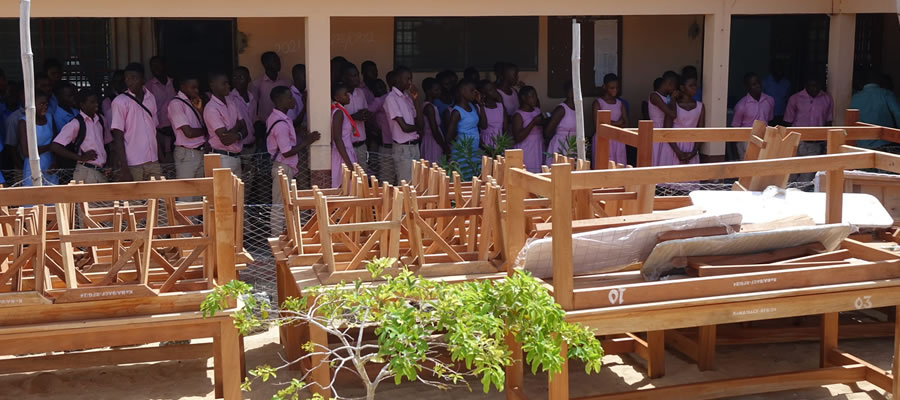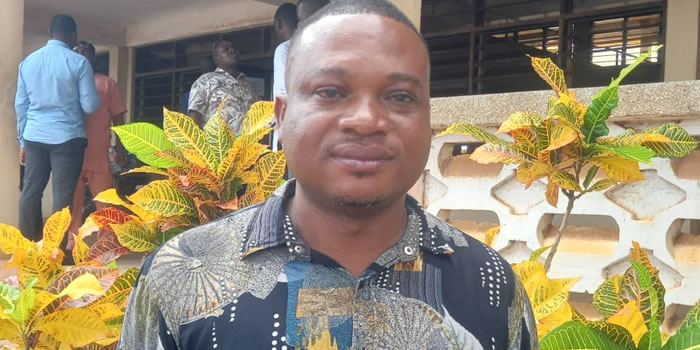

Investment and Business Potential
Being a strategically located district, naturally endowed and has relatively well developed infrastructure and services, Ketu South Municipal boasts some of the best investment opportunities in Ghana, offering highly competitive returns on investment. The municipality is primarily an agricultural one, with about 70% of the economically active population engaged in agriculture.
Productivity is relatively high and investors in the municipality enjoy a distinct advantage due to its geographical position. The municipality is a major producer of cassava and maize. Other important crops are cowpea, sweet potato, sugar cane and vegetables, while tree crops include coconut, mangoes and oil palm. At Penyi, cassava and gari production ranks as the best in Ghana, in terms of sheer productivity.
The same applies to sugar cane at Atiteti and cassava, maize and rice at Weta. Livestock thrives too, with cattle, goats, sheep and pigs bred alongside poultry. Indeed, Agbozume boasts of one of the west coast’s most vibrant livestock markets. Similarly, marine fishing is prominent along the municipalit’s extensive coastline, while aqua-culture stands out in the creeks and along rivers, dams and ponds.
Seven out of ten fish ponds belonging to the Agriculture “Department of the ,unicipal Assembly have been leased out to private farmers. Sustainable management of the thriving fisheries sector is being enhanced by community- based Fisheries Management Committees. Market gardening along the coast from Aflao to Adafienu has received a tremendous boost in recent months.
Higher earnings from export markets and financial assistance from the Agricultural Development Bank have mostly raised production of chilies and new markets are now being sought. Rising production capabilities are matched by growing marketing opportunities. Denu’s market specialises primarily in fish, especially smoked herrings, as well as other agricultural produce, which the Aflao market also excels in
The agricultural produce from Ghana’s Brong Ahafo and Ashanti Regions which come to the municipality is subsequently exported to Togo. Ketu South Municipal Assembly has recently rehabilitated Denu and Agbozume Markets at the cost of ¢24,869 millions. This supports the municipal’s position as a bread-basket, positioned as an export vanguard in Ghana.
The people of Agbozume and Klikor are particularly noted for their skills in producing Kente, a cloth for which Ghana is internationally renowned. Other industries include mining, metal works, wood and furniture, as well as other small-scale artisans. Again, Ketu South Municipal’s location offers strong advantages, especially for companies which wish to operate as free-zones. Credit facilities and project support are available for investors in the trade and industry sector.
Both the Ghana Commercial Bank, the country’s largest bank, and the Agricultural Development Bank, the sub-region’s most successful agricultural sector commercial lender, operate branches in the Municipality. Ketu District’s heavy natural endowment extends to the mining and quarrying sector.
Clay deposits exist at Kuli in commercial quantities and the District Assembly is actively seeking investors to exploit these deposits, who stand to enjoy wide margins. Similarly, there is a large stone quarry deposit at Torve Kpornoe, near Dzodze. Instructively, this provides invaluable inputs for a construction industry that stands to thrive in the Ketu District which inevitably establishes itself as a central part of Ghana’s Gateway to West Africa Programme
Municipal Finance
Costing the plan
The total estimated cost of the 4 year plan is 132.1 billion ccdis. The Privtie Sector Competitiveness component is estimated at 79.92 billion. Human Resource Development is put at 49.286 billion and Good Governance and Civic Responsibility is estimated at 3.080 billion ccdis. A critical look at the financial presentation shows that it is possible to implement til! the activities identified in the plan. This is because there is no financing gap between expenditure and revenue sources. This statement howevcr depends on one critical assumption. The assumption is that funds expected from donor and external sources will be forthcoming and on time.
Experience has shown that delays and shortfalls often characterize the release of external funds. We therefore have to express cautious optimism on the success of the implementation of the plan. Just as it obtains at the national level, funds for the implementation of the plan will depend heavenly on donor support. In fact about 97 billion which represents 73% of funds are expected from donor sources. In addition, the DACF is also expected to rake in about 30 billion during the plan period. This comes to 22% of the budget. Inflows from the DACF are also notoriously untimely. This poses another serious challenge to the successful implementation of planned activities.
The major chunk of funds is expected from the Millennium Challenge Account which will be implemented from January 2007. It is our hope that this critical component will be forthcoming. This will enable the Municipal Assembly implement most of its major infrastructure programs in the education, water and sanitation, electricity supply, roads and agriculture sectors.
Date Created : 11/21/2017 6:23:46 AM













 facebook
facebook
 twitter
twitter
 Youtube
Youtube
 +233 593 831 280
+233 593 831 280 0800 430 430
0800 430 430 GPS: GE-231-4383
GPS: GE-231-4383 info@ghanadistricts.com
info@ghanadistricts.com Box GP1044, Accra, Ghana
Box GP1044, Accra, Ghana